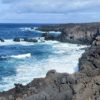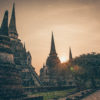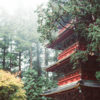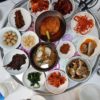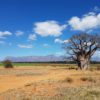This reportage illustrates a long trip through the 3-year-long Andes in South America, ranging from some of Chile’s most important landscapes and archaeological beauties to Bolivia and Peru. This is a low-cost group tour that includes transfers by public transport such as buses, trains, airplanes and ferries, staying in small, family-run guest houses along the way.
At the archaeological sites and the most important museums, guides were made on site so that they could have more detailed explanations, while the Bolivian plateau crossing was made in 4×4 with an experienced driver in the area. Much of the journey takes place at extreme altitudes well above 3000 meters.
WHAT TO DO AND WHAT TO SEE IN PERU, BOLIVIA AND CHILE
Chile, Bolivia and Peru are among the most beautiful countries in the world in terms of extreme landscapes, nature, culture, history and archeology, so a trip between these places is suitable for anyone interested in these topics. Chile and Bolivia are particularly recommended for those who love nature, landscapes and geology, while a trip to Peru is particularly suitable for those who are interested in history and archeology.
Although each country’s tour may take several weeks to see most of the attractions offered, there are many agencies and tour operators that offer combined two-country itineraries of a couple of weeks (example Chile and Bolivia for Nature and landscapes, or Peru and Bolivia for history and archeology), as well as all three countries (Chile, Bolivia and Peru) but with a minimum flight time of 20 days. These combined tours, such as those featured in this reportage, including Chile, Bolivia and Peru, provide a good overview of the three countries and a great mix of nature and archeology.
However, some of the attractions offered by each country are left out, such as Amazon rainforest in Peru and Bolivia, or Patagonia in Chile.
WHAT IS THE BEST PERIOD TO GO TO BOLIVIA, PERU AND CHILE?
The best season to visit Bolivia, Peru and Northern Chile, as shown in this travel diary, corresponds to southern winter, so from June to September included. During these months the temperatures are cooler, but the sky is clearer and the precipitation is heavily reduced or virtually absent. This climate not only allows you to enjoy the best outdoor life that such a type of travel imposes, but also prevents the possibility of varying the itinerary, for example due to landslides and landslides that interrupt the communication routes, Event not to be excluded during the rainy season.
HOW IS THE CLIMATE IN PERU, BOLIVIA AND CHILE DURING THE WINTER?
If you have decided to travel to Bolivia, Peru and Chile in winter (as mentioned the best season for this itinerary), but you are wondering if it may be a bit too cold, you should know that the temperature varies considerably with latitude And with altitude. In northern Chile, in the San Pedro de Atacama area, the temperature is cool and pleasant during the day, with strong sunlight, while at night and early in the morning it will be much colder and will serve as a sweater.
In Bolivia, according to the route presented in this travel report, you will always find yourself at considerable altitudes, where it is cold in the day (but at least in the presence of the sun, never below zero) and very cold at night and in the early morning , With temperatures that in the big desert of the sea may drop below -15 degrees Celsius. Sometimes these temperatures are accompanied by strong wind, both day and night. In Peru, the temperature gradually becomes more mild, moving from Lake Titicaca to the north, either because it approaches the equator and because the altitude drops gradually. The climate at Machu Picchu is much milder, but damp and rainy (even in the winter) and you will notice the presence of a beautiful rainforest with trees and flowers.
One thing to consider is that in Bolivia huts (even in extreme areas) and in many guest houses throughout the itinerary, there is no heating system, so it may happen that you have to eat and sleep in very cold, A condition for which you have to be prepared with suitable clothing to use even when resting. Another important aspect to consider is the high intensity of sun due to extreme altitudes, a condition for which it is important to protect unbleached body parts with sunscreen and always wear sunglasses.
WHEN THE MOUNTAIN MALES SOFFRE DURING A PERU TRAVEL, BOLIVIA, AND CHILE?
The altitudes to which the Ande tour is presented on this travel diary are extreme and greater than 3000 meters for most days, with bits of 4500 and 5000 meters. If you have decided to travel to Peru, Bolivia and Chile, but if you are wondering if the altitude can cause you problems, be aware that because of the high altitude, some people in the group who took this route with me, A slight mountain sickness, however, disappeared after a couple of days.
To help prevent mountain discomfort while traveling to Peru, Bolivia and Chile, it is useful:
- Avoid starting your trip to La Paz, reaching this city directly from Italy.
- The Paz is almost 4000 meters high and if you come here without being acclimated to the high altitude, you will almost certainly have some problems.
- The best place to start your trip is San Pedro de Atacama in Chile (2400 meters) where to stop 2-3 nights before continuing to higher altitudes (possibly from San Pedro de Atacama you can hike a few hours to higher altitudes, A technique that allows you to acclimatize at a much faster rate). Alternatively, Arequipa in Peru (2400 meters, not present on this itinerary) can go well, while Cusco, with its 3400 meters, may be more problematic.
- Get up as gradually as possible, although the itinerary and the type of trip (we do not have mountain hiking) do not always allow it. After reaching 2500 meters, the ideal would be to climb 300 meters per day, providing two nights of rest at the same altitude, every 1000 meters overall.
- Avoid getting up even if you do not feel well at the present time, and if the disorder persists for more than 2-3 days, it is better to go back and down
- Drink at least 2-3 liters of water per day, even if you are not thirsty
- Do not smoke or drink alcohol
- Before leaving, ask for a medical consultation
Is it good to drink mate de coca for mountain sickness?
In Bolivia and Peru it is customary to drink mate de coca, as it would have dull analgesic effects and would help acclimatize to high altitude. The mate de coca is an infusion (basically a tea) based on coca leaves which does not produce any dependence and does not have the heavy effects of direct coca honey, but there are no scientific documents demonstrating the effective use of this Drink in preventing and treating mountain illness (at least on the date this report is made). I drank the mate de coca because it is good and, as explained, the very intake of liquids is crucial to better acclimatize to extreme odds.
IS POSSIBLE TO ORGANIZE A FAI-BY-TEAM TRAVEL IN PERU, BOLIVIA AND CHILE? WHERE TO BOOK A TOUR IN PERU, BOLIVIA AND CHILE?
Chile, Bolivia and Peru are particularly suited to the do-it-yourself trip, departing only with an airline ticket and a reservation of the most important services required, such as domestic flights and the 4×4 tour in Bolivia’s high desert (In high season it may be difficult to find availability for these tours with last-minute reservations made at La Paz or San Pedro de Atacama), everything else can be arranged by road, including bus or train transfers, guided tours Archaeological sites and overnight stays. If you prefer to leave without thought, the agencies that offer tours in these South American countries are numerous and, among the many routes it offers, you will certainly find what is right for you



